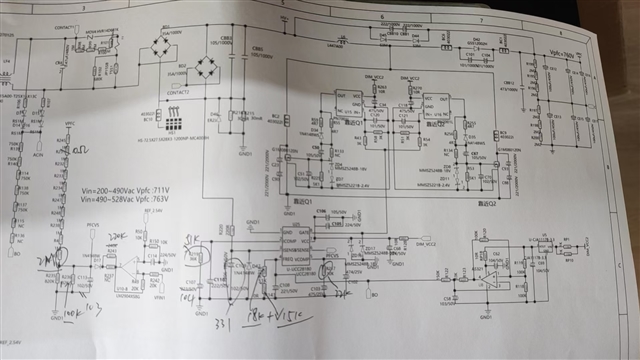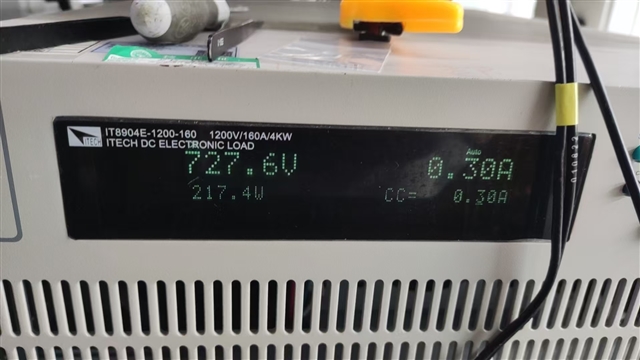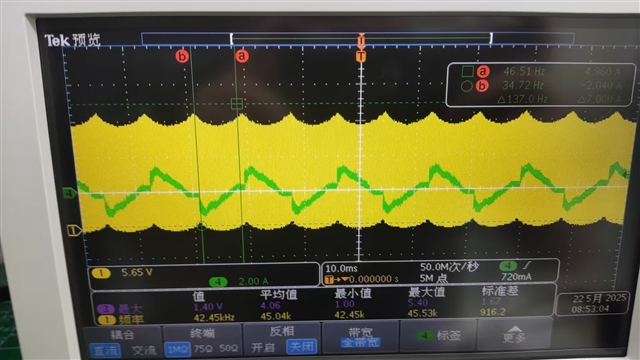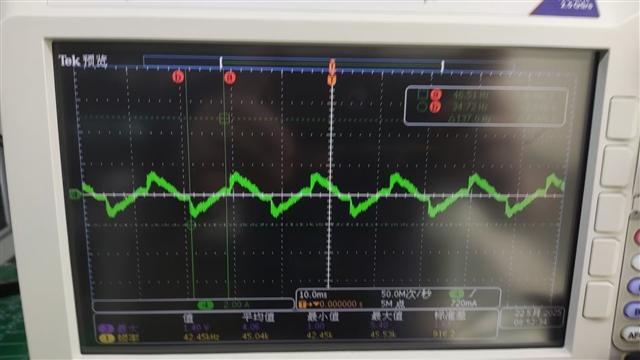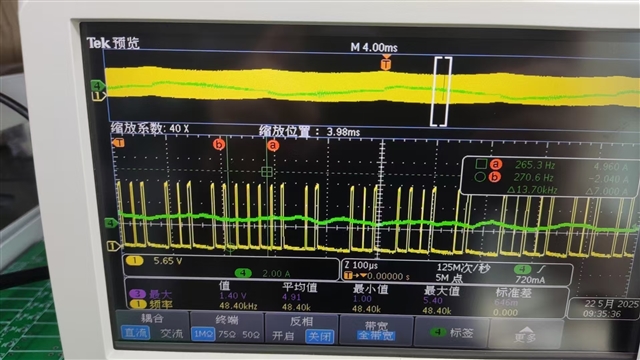Tool/software:
Hi TI Team,
When the customer was debugging UCC28180, they encountered harmonics that were difficult to debug. It was very bad. The specific situation is described as follows
When the input voltage is 480V, that is, when a high voltage is input and a light load is driven, for example, between 10%, 5% and 30%, the PF value and harmonics are relatively poor. Then, when the drive waveform is expanded, it is found that at the intersection, the frequency is unstable and there is a phenomenon of periodic hopping.
The specific test waveforms, test data and circuit diagrams are as follows:
